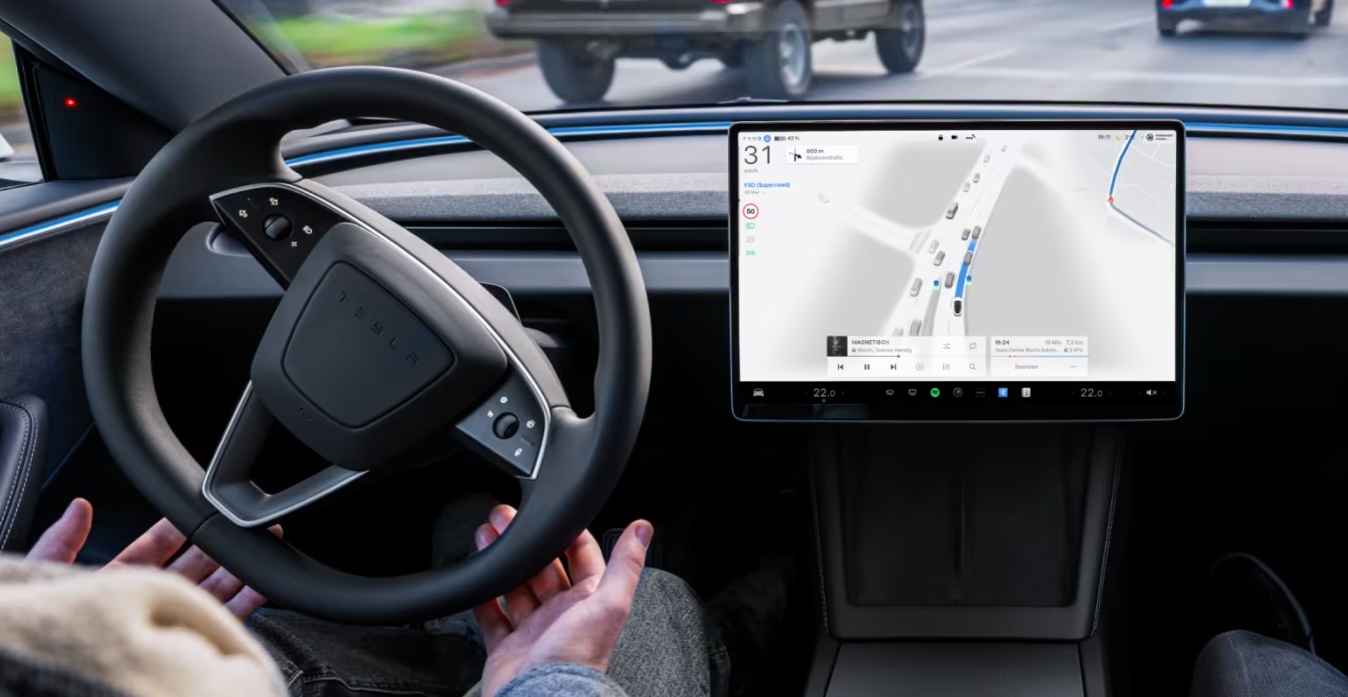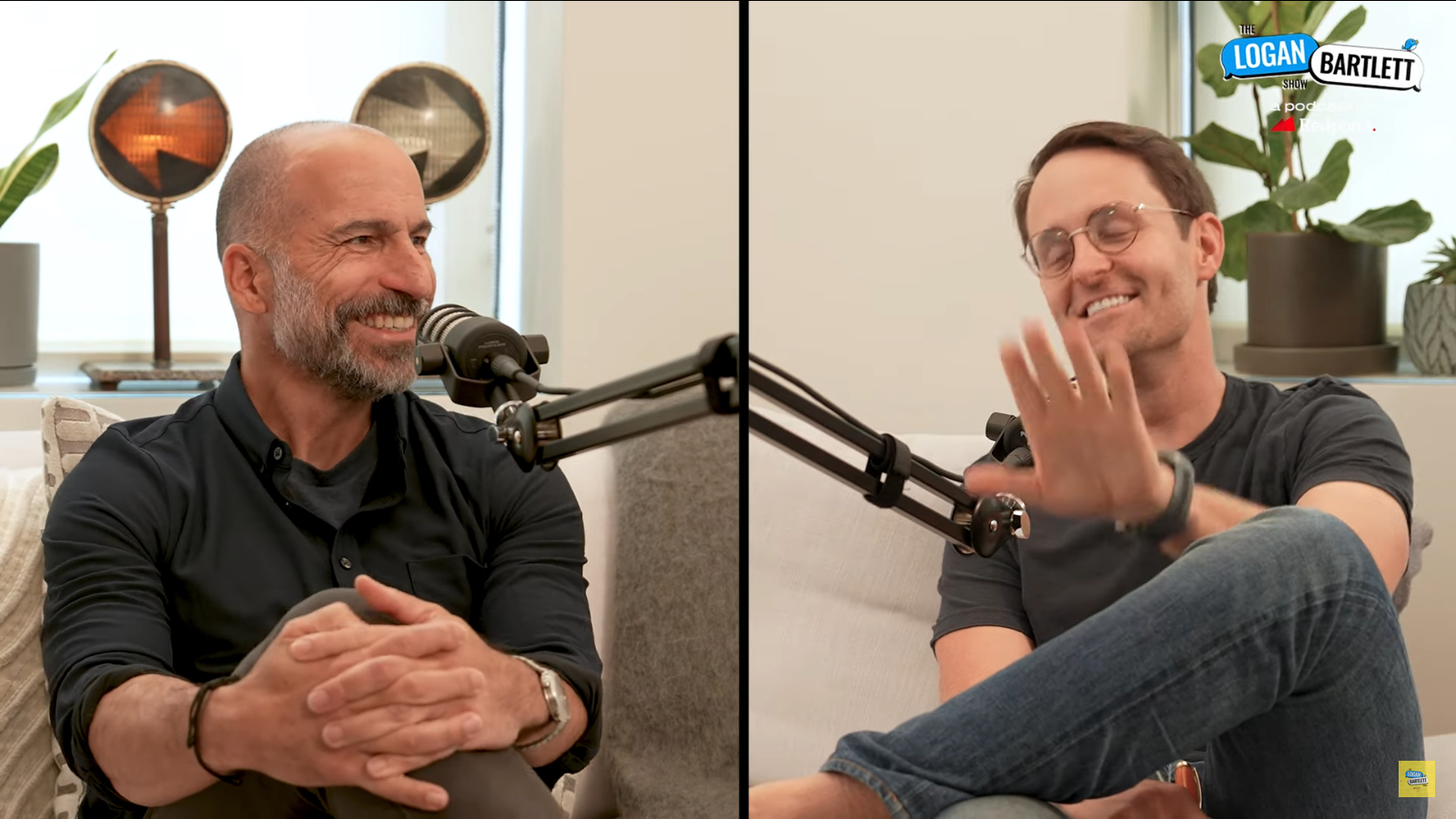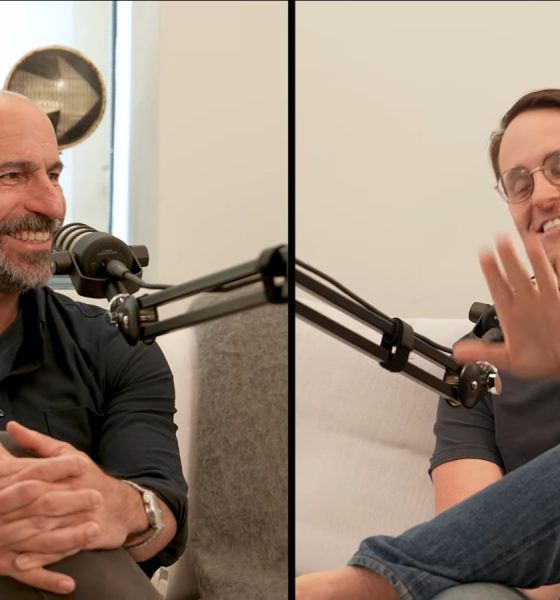The CEO of ride-sharing platform Uber has shared some of his doubts about Tesla’s ability to effectively execute robotaxi plans for its customers, pointing to the customer service side of the business as well as vehicle owner skepticism about letting strangers into their cars.
Tesla plans to launch a robotaxi platform in October, and CEO Elon Musk has talked at length over the years about hopes that such a platform could let owners’ vehicles work in a ride-sharing capacity while not in use, effectively making them money while driving themselves and ride-share passengers.
On Friday, Uber CEO Dara Khosrowshahi appeared on the Logan Bartlett Show on YouTube to discuss autonomous vehicles, during which he expressed more than a few doubts about Tesla’s robotaxi plans. For one, he says, peak ride-sharing times might coincide with the times owners want to use their own vehicles.
“Probably the times at which you’re going to want your Tesla are probably going to be the same times that ridership is going to be at a peak,” Khosrowshahi said during the interview.
He also notes that he doesn’t think society is prepared for self-driving vehicles, even if they are getting closer to goals of becoming safer than human drivers.
“Logic would dictate that if robots are twice as good a driver or three times as good as drivers as humans, that’s good for society going forward, but I honestly don’t know if society’s ready to accept that,” Khosrowshahi said.
The Uber CEO also talked about the business changes that Tesla would need to invest in to successfully build such a platform, and he noted how different he believes the ride-sharing and vehicle-building businesses really are.
“It’s a really, really different business you know, as well as talking about hardware, to build a $20,000 or $50,000 piece of hardware from driving over 30 million transactions every day that on a revenue basis you make $2 off of,” he added. “It’s just a very, very different business.”
Khosrowshahi also goes on to highlight the extra platforms that companies have to create to accommodate things that can go wrong in a ride-sharing vehicle, from people getting sick and wanting to pay with cash to those losing items in their ride-share, accidents, and more.
Unsurprisingly, he notes that it might be worthwhile for Tesla to partner with ride-sharing services like Uber in the future instead of developing its own, noting that he thinks the automaker could benefit from partnering with Uber.
“It’s taken us 15 years. It’s taken us tens of billions of dollars of capital, and we can provide that instantly to a partner,” Khosrowshahi added. “Hopefully, Tesla will be one of those partners.”
You can see the full interview with Uber CEO Dara Khosrowshahi below, as hosted by the Logan Bartlett show.
To be sure, Tesla has already teased a mobile platform it has been building for its robotaxi plans, and it has been developing its Full Self-Driving (FSD) Supervised for the past several years through testing and training from drivers that have purchased the software.
Other companies like Waymo and Cruise have also been working on their own driverless ride-hailing solutions, with the former already offering paid rides in select areas for the service. Despite this, Musk has previously highlighted that he thinks these companies will have a lot more trouble scaling these services, due to their requirements of high-density mapping of specific serviceable areas.
These, Musk says, are unlike FSD, which can theoretically be used just about anywhere due to its camera-based system and continuously-trained neural network. It’s worth noting that Tesla’s FSD still requires supervision, hence the name FSD “Supervised,” and it isn’t exactly clear just yet when the company expects to launch unsupervised versions of the software.
Although Tesla was originally supposed to hold its robotaxi unveiling event this month, Musk noted that the delayed event would allow the company to make some important changes and allow it to show off additional features.
“Requested what I think is an important design change to the front, and extra time allows us to show off a few other things,” Musk wrote in a post on X last month.
What are your thoughts? Let me know at zach@teslarati.com, find me on X at @zacharyvisconti, or send us tips at tips@teslarati.com.

News
Tesla FSD V14.2.1 is earning rave reviews from users in diverse conditions
Tesla’s Full Self-Driving (Supervised) software continues its rapid evolution, with the latest V14.2.1 update drawing widespread praise.

Tesla’s Full Self-Driving (Supervised) software continues its rapid evolution, with the latest V14.2.1 update drawing widespread praise for its smoother performance and smarter decision-making.
Videos and firsthand accounts from Tesla owners highlight V14.2.1 as an update that improves navigation responsiveness, sign recognition, and overall fluidity, among other things. Some drivers have even described it as “more alive than ever,” hinting at the system eventually feeling “sentient,” as Elon Musk has predicted.
FSD V14.2.1 first impressions
Early adopters are buzzing about how V14.2.1 feels less intrusive while staying vigilant. In a post shared on X, Tesla owner @LactoseLunatic described the update as a “huge leap forward,” adding that the system remains “incredibly assertive but still safe.”
Another Tesla driver, Devin Olsenn, who logged ~600 km on V14.2.1, reported no safety disengagements, with the car feeling “more alive than ever.” The Tesla owner noted that his wife now defaults to using FSD V14, as the system is already very smooth and refined.
Adverse weather and regulatory zones are testing grounds where V14.2.1 shines, at least according to testers in snow areas. Tesla watcher Sawyer Merritt shared a video of his first snowy drive on unplowed rural roads in New Hampshire, where FSD did great and erred on the side of caution. As per Merritt, FSD V14.2.1 was “extra cautious” but it performed well overall.
Sign recognition and freeway prowess
Sign recognition also seemed to show improvements with FSD V14.2.1. Longtime FSD tester Chuck Cook highlighted a clip from his upcoming first-impressions video, showcasing improved school zone behavior. “I think it read the signs better,” he observed, though in standard mode, it didn’t fully drop to 15 mph within the short timeframe. This nuance points to V14.2.1’s growing awareness of temporal rules, a step toward fewer false positives in dynamic environments.
FSD V14.2.1 also seems to excel in high-stress highway scenarios. Fellow FSD tester @BLKMDL3 posted a video of FSD V14.2.1 managing a multi-lane freeway closure due to a police chase-related accident. “Perfectly handles all lanes of the freeway merging into one,” the Tesla owner noted in his post on X.
FSD V14.2.1 was released on Thanksgiving, much to the pleasant surprise of Tesla owners. The update’s release notes are almost identical to the system’s previous iteration, save for one line item read, “Camera visibility can lead to increased attention monitoring sensitivity.”
News
Tesla FSD Supervised ride-alongs in Europe begin in Italy, France, and Germany
The program allows the public to hop in as a non-driving observer to witness FSD navigate urban streets firsthand.

Tesla has kicked off passenger ride-alongs for Full Self-Driving (Supervised) in Italy, France and Germany. The program allows the public to hop in as a non-driving observer to witness FSD navigate urban streets firsthand.
The program, detailed on Tesla’s event pages, arrives ahead of a potential early 2026 Dutch regulatory approval that could unlock a potential EU-wide rollout for FSD.
Hands-Off Demos
Tesla’s ride-along invites participants to “ride along in the passenger seat to experience how it handles real-world traffic & the most stressful parts of daily driving, making the roads safer for all,” as per the company’s announcement on X through its official Tesla Europe & Middle East account.
Sign-ups via localized pages offer free slots through December, with Tesla teams piloting vehicles through city streets, roundabouts and highways.
“Be one of the first to experience Full Self-Driving (Supervised) from the passenger seat. Our team will take you along as a passenger and show you how Full Self-Driving (Supervised) works under real-world road conditions,” Tesla wrote. “Discover how it reacts to live traffic and masters the most stressful parts of driving to make the roads safer for you and others. Come join us to learn how we are moving closer to a fully autonomous future.”
Building trust towards an FSD Unsupervised rollout
Tesla’s FSD (Supervised) ride-alongs could be an effective tool to build trust and get regular car buyers and commuters used to the idea of vehicles driving themselves. By seating riders shotgun, Tesla could provide participants with a front row seat to the bleeding edge of consumer-grade driverless systems.
FSD (Supervised) has already been rolled out to several countries, such as the United States, Canada, Australia, New Zealand, and partially in China. So far, FSD (Supervised) has been received positively by drivers, as it really makes driving tasks and long trips significantly easier and more pleasant.
FSD is a key safety feature as well, which became all too evident when a Tesla driving on FSD was hit by what seemed to be a meteorite in Australia. The vehicle moved safely despite the impact, though the same would likely not be true had the car been driven manually.
News
Swedish union rep pissed that Tesla is working around a postal blockade they started
Tesla Sweden is now using dozens of private residences as a way to obtain license plates for its vehicles.

Two years into their postal blockade, Swedish unions are outraged that Tesla is still able to provide its customers’ vehicles with valid plates through various clever workarounds.
Seko chairman Gabriella Lavecchia called it “embarrassing” that the world’s largest EV maker, owned by CEO Elon Musk, refuses to simply roll over and accept the unions’ demands.
Unions shocked Tesla won’t just roll over and surrender
The postal unions’ blockade began in November 2023 when Seko and IF Metall-linked unions stopped all mail to Tesla sites to force a collective agreement. License plates for Tesla vehicles instantly became the perfect pressure point, as noted in a Dagens Arbete report.
Tesla responded by implementing initiatives to work around the blockades. A recent investigation from Arbetet revealed that Tesla Sweden is now using dozens of private residences, including one employee’s parents’ house in Trångsund and a customer-relations staffer’s home in Vårby, as a way to obtain license plates for its vehicles.
Seko chairman Gabriella Lavecchia is not pleased that Tesla Sweden is working around the unions’ efforts yet again. “It is embarrassing that one of the world’s largest car companies, owned by one of the world’s richest people, has sunk this low,” she told the outlet. “Unfortunately, it is completely frivolous that such a large company conducts business in this way.”
Two years on and plates are still being received
The Swedish Transport Agency has confirmed Tesla is still using several different workarounds to overcome the unions’ blockades.
As noted by DA, Tesla Sweden previously used different addresses to receive its license plates. At one point, the electric vehicle maker used addresses for car care shops. Tesla Sweden reportedly used this strategy in Östermalm in Stockholm, as well as in Norrköping and Gothenburg.
Another strategy that Tesla Sweden reportedly implemented involved replacement plates being ordered by private individuals when vehicles change hands from Tesla to car buyers. There have also been cases where the police have reportedly issued temporary plates to Tesla vehicles.











